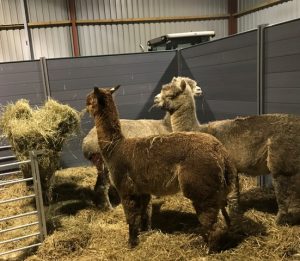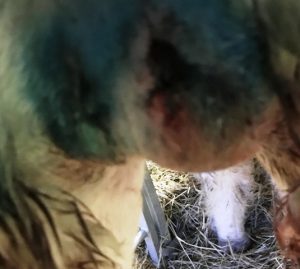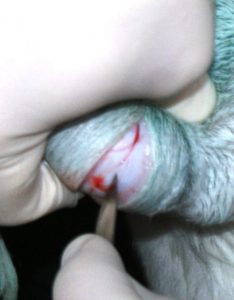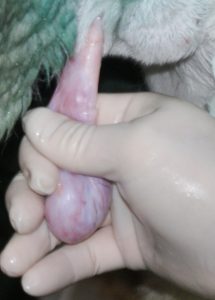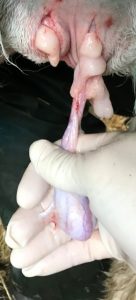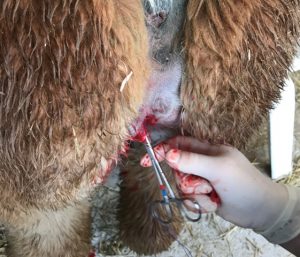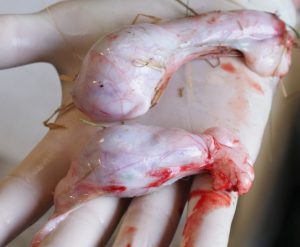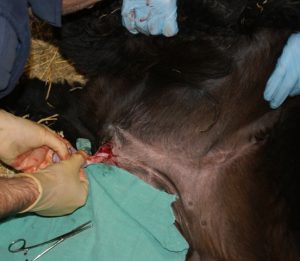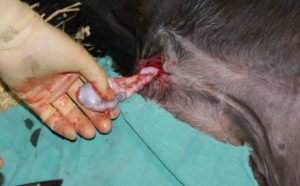WARNING – Graphic Castration photos follow, Kensmyth Alpaca, Clay Meadow
WARNING – Graphic Castration photos follow – you have been warned
Well for those of you who think of Alpaca and farming them as “cute and fluffy” creatures, this year I will enlighten you as to the hard life farming Alpaca (any livestock) is and the amount of dedication required.
Harsh weather is one thing but soon goes and you are left with mud and gloop in our clay pastures unless carefully maintained (as we do) … this means any livestock operated on needs barning to prevent infection. Tekplas partitions in our barns are moved around and are used continually here as easy wipe down.
The following photographs show different Alpaca being castrated in order to demonstrate how it is done and how they are not “lamb ringed” at birth, requiring an operation and sensitive care and handling by experienced owners at all times. afterwards the genital area will swell often giving the impression that the testicles are still in there but this swelling soon abates. what to watch for closely are signs of temperature, anaemia, not eating etc when antibiotics might then be needed – rear view of swelling shown below not graphic…
as photographer on standby on this occasion – my personal thanks to my son Ollie for holding the “cut standing” Alpaca and to Vets Chris Warren and Jonathan Cranston for a superb clean castration of these Alpaca.
WARNING – Graphic Castration photos follow
Please note Kensmyth do not and will not castrate under 2 years old as this can prevent growth and maturity of Alpaca including bone development – so do not expect tiny testicles when you get to that part.
Cut standing:
the first incision is made carefully to remove the first testicle…
which is then dropped out in order to be cut off with clamping to prevent blood flow… then the second testicle is removed…
then the Alpaca is stitched up (the observant amongst you will notice different Alpaca each photo!)
and then the finished article – job done!
perfectly matched testicles taken from adult males.
Now if you want to see the difference between “cut standing” where the Alpaca is sedated with local anaesthetic and “dropped” see below. The cost is higher for “dropped” and as always a slight risk to the Alpaca for being “put under” so it is a matter of preference and facilities available really as the risk is so minimal. There can be complications in each case and recovery and aftercare to avoid infection is exactly the same “cut standing” or “dropped”
two Vets attend on each occasion and sterile conditions are required.
